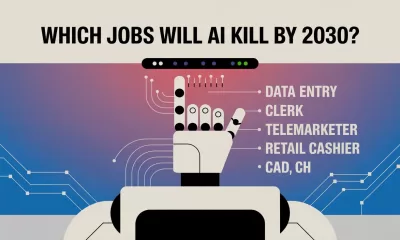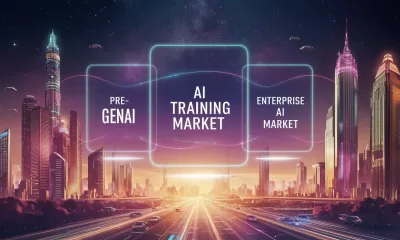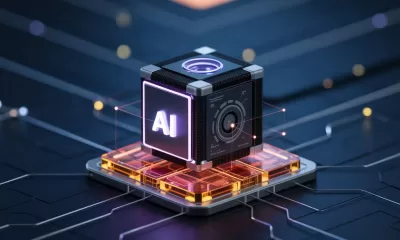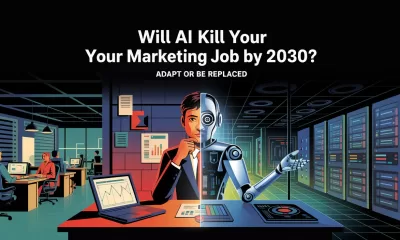Life
10 AI Prompts to Turn Your Pet Photos Into Phone Wallpapers (Plus Freebies!)
Discover 10 amazing prompts for how to create AI-powered phone wallpapers with AI platform, Midjourney. Unleash your inner artist!
Published
3 months agoon
By
AIinAsia
TL;DR
- Learn how to turn your pet photos into stunning AI-generated wallpapers for your phone.
- Includes 10 creative AI prompts, from fantasy hero pets to minimalist silhouettes.
- Tips on using tools like MidJourney or DALL-E, optimising images, and sharing creations.
AI Pet Phone Wallpapers
Whether you’re a proud pet parent or simply adore animals, turning your furry (or feathery) friend into stunning AI-generated art is an exciting way to personalise your phone. With AI tools like MidJourney, DALL-E, or Stable Diffusion, you can create incredible, artistic renditions of your pet that fit your style and aesthetic.
In this article, we’ll share 10 unique AI prompts tailored to transform your pet photos into captivating works of art for your phone. You’ll also find detailed tips for getting started and optimising your wallpapers for the perfect fit.
Handy hint: Like the look of one of these images? Tap and hold on your phone and choose ‘Set as Wallpaper’ (or a similar option)—AIinASIA Editor
Why Create AI Phone Wallpapers of Your Pet?
- Celebrate Your Pet: Turn your beloved companion into a piece of art you can cherish every time you unlock your phone.
- Personalisation: Make your phone truly unique with wallpapers that reflect your style and personality.
- Explore Creativity: Experiment with different artistic styles—be it fantasy, minimalist, or futuristic—and see your pet like never before.
Getting Started with AI-Generated Pet Wallpapers
To create AI art that truly stands out, follow these simple steps:
- Choose Your AI Tool: Platforms like MidJourney, DALL-E, or Stable Diffusion are perfect for generating artistic images from prompts. Look for features like image-to-image transformations, which allow you to upload your pet’s photo as a reference.
- Pick a High-Quality Photo: AI tools perform better with clear, detailed images. Choose a well-lit photo where your pet’s features—eyes, fur, feathers—are easy to distinguish.
- Tailor the Aspect Ratio: Most phones use a 9:16 aspect ratio (e.g., 1080×1920 pixels). Many AI platforms let you specify image dimensions before generating your artwork.
- Experiment with Prompts: Use the creative prompts provided below, or modify them to suit your pet’s personality and your artistic preferences.
- Finalise and Optimise: After generating the artwork, use tools like Canva or Snapseed to crop, adjust colours, or apply finishing touches.
10 AI Prompts for Stunning Pet Wallpapers
1. Fantasy Realm Hero
Inspiration: Imagine your dog as a knight or your cat as a sorceress—ready to embark on epic adventures!
Prompt: “A majestic portrait of [your pet’s species] wearing intricate fantasy armour, glowing eyes, standing atop a mountain, ethereal lighting, detailed fur texture, high-resolution phone wallpaper.”

2. Watercolour Painting
Inspiration: A soft, elegant depiction that works beautifully as a lock screen.
Prompt: “A hand-painted watercolour portrait of [your pet’s breed], soft pastel tones, white background, minimalistic style, high-resolution for phone wallpaper.”

3. Neon Cyberpunk
Inspiration: Perfect for sci-fi fans who love bold, high-energy designs.
Prompt: “A cyberpunk-style portrait of [your pet’s name], glowing neon colours, city skyline background, futuristic armour, vibrant lighting effects, high-resolution wallpaper.”

4. Royal Portrait
Inspiration: Imagine your pet as king, queen, or duke—complete with a gilded frame.
Prompt: “A regal portrait of [your pet’s species] dressed in Victorian royal attire, soft studio lighting, intricate clothing details, realistic painting, designed for a phone wallpaper.”

5. Dreamy Galaxy Explorer
Inspiration: Great for cosmic dreamers who want their pet among the stars.
Prompt: “A whimsical depiction of [your pet’s breed] floating in a galaxy, surrounded by planets and stars, dreamy pastel colours, cosmic glow, phone wallpaper resolution.”

6. Comic Book Superhero
Inspiration: Give your pet a bold, action-packed look with superhero vibes.
Prompt: “A dynamic comic book illustration of [your pet’s species] in superhero attire, bold colours, action pose, halftone effects, phone wallpaper resolution.”

7. Pop Art Extravaganza
Inspiration: Bright, eye-catching art for fans of modern and retro styles.
Prompt: “A vibrant pop art portrait of [your pet’s species], bold colours, abstract shapes in the background, Andy Warhol-inspired design, phone wallpaper size.”

8. Winter Wonderland
Inspiration: A seasonal touch for those who love winter themes.
Prompt: “A serene portrait of [your pet’s name] sitting in a snowy forest, soft light, frost-covered trees, realistic fur details, high-resolution phone wallpaper.”

9. Minimalist Silhouette
Inspiration: Perfect for a sleek, understated home screen.
Prompt: “A minimalist black-and-white silhouette of [your pet’s breed], clean lines, solid colour background, modern art style, high-resolution for phone wallpaper.”

10. Anime-Inspired Portrait
Inspiration: A playful depiction of your pet in a whimsical anime world.
Prompt: “An anime-style illustration of [your pet’s species], big expressive eyes, pastel colours, soft background, whimsical vibe, high-resolution phone wallpaper.”

Pro Tips for AI Success With AI-Generated Art
- Fine-Tune Prompts: Be specific about the colours, textures, and settings to get the best results.
- Use Advanced Features: Many AI tools offer style transfer or reference image settings—use them for a more customised look.
- Generate Variations: Create multiple versions of the same prompt to explore different artistic outcomes.
Sharing Your Creations
Once you’ve created your masterpiece, share it! Post your custom wallpapers on Instagram, Pinterest, or your favourite social platforms. Tag AIinASIA to inspire fellow pet lovers and show off your AI creations.
Final Thoughts on AI Personalised Wallpapers
AI tools are opening up endless possibilities for creating personalised and unique art. With these prompts, you can transform your pet into a star on your phone screen—whether they’re ruling a fantasy kingdom, exploring space, or posing as a royal icon.
Get started today and let your imagination run wild. Don’t forget to drop a comment or tag us with your favourites—your pet might just become the next AI art sensation!
You may also like:
- 10 Amazing Prompts to Create AI-Powered Phone Wallpapers (with Freebies!)
- AIinASIA shop – where AI creativity meets human inspiration
- Are AI Pets the Future?
Author
Discover more from AIinASIA
Subscribe to get the latest posts sent to your email.
You may like
-


AI Career Guide: Land Your Next Job with Our AI Playbook
-


Will AI Take Your Job—or Supercharge Your Career?
-


Can AI Videos Really Boost Your Brand’s Authenticity?
-


Which Jobs Will AI Kill by 2030? New WEF Report Reveals All
-


The Three AI Markets Shaping Asia’s Future
-


Would You Trust Tesla’s Grok AI More Than Your Friends?
Life
AI Career Guide: Land Your Next Job with Our AI Playbook
Discover how to leverage AI for your career success. Our AI career guide offers tips on CV writing and interview preparation.
Published
1 week agoon
April 10, 2025By
AIinAsia
- AI transforms every step of your job hunt.
- From CV writing to interview prep—turning a stressful, uncertain process into strategic clarity.
- While AI won’t directly secure you a job, it will significantly boost your chances.
- Welcome to Your AI Career Playbook.
Introduction: Making AI Your Personal Career Coach
Let’s be honest: finding a great job in Singapore—or anywhere in Asia—is no cakewalk. The market moves quickly, employers want more specialised skills than ever, and getting your CV past automated scanners feels like navigating a digital minefield.
What if you had an always-on career advisor that could help you write perfect applications, prep you for interviews, and even help you network? It’s not a fantasy—it’s artificial intelligence. AI tools are now sophisticated enough to give you the career edge you need. By the end of this guide, you’ll have a clear playbook for harnessing AI to land your next big role.
Let’s dive in!
Can AI Actually Land You Your Next Job—or is That Just Hype?
Let’s get real: AI isn’t about replacing your effort, but about amplifying your abilities. With AI, you can:
- Craft a customised, keyword-rich CV that sails through Applicant Tracking Systems (ATS).
- Optimise your LinkedIn profile instantly for maximum visibility.
- Identify emerging AI-driven job roles and skills employers actually care about.
- Anticipate and ace your interviews using AI-generated questions and answers.
AI doesn’t just automate tedious tasks; it empowers you to compete smarter, especially in competitive markets like Singapore, Jakarta, or Hong Kong.
AI-Powered Career Prep: Step-by-Step Playbook
Here’s a comprehensive guide to turbocharging your career search using AI, including practical examples, recommended tools, and easy-to-use prompts.
Step 1: Crafting an Irresistible CV with AI
Your CV typically has less than 10 seconds to impress a recruiter. It must pass through Applicant Tracking Systems (ATS) before it ever reaches human eyes. AI tools can optimise your CV to ensure it’s keyword-rich, tailored precisely to each role, and visually appealing.
AI Tools to Use:
- ChatGPT (OpenAI) – powerful generative AI for rewriting CVs.
- Kickresume AI – professional CV builder with AI-driven wording suggestions.
- TealHQ – provides ATS-friendly formatting and skill recommendations.
How to Use These Tools:
- Input your current CV.
- Use targeted prompts to optimise content.
Prompt Examples:
Rewrite my CV to highlight experience in AI-driven marketing analytics for a senior digital strategist role at DBS Bank in Singapore.
Optimise my CV for ATS, targeting a software engineering position specialising in AI at Grab.
Spend time refining outputs; personalisation is essential.
Step 2: Supercharging Your LinkedIn Profile with AI
LinkedIn is your professional showcase. Recruiters across Asia heavily rely on LinkedIn to discover and vet candidates. AI tools can instantly elevate your profile, making it searchable, engaging, and compelling.
AI Tools to Use:
- Taplio – LinkedIn profile optimiser powered by AI.
- LinkedIn’s built-in AI assistant – available in LinkedIn Premium for profile enhancement.
- Jasper.ai – excellent for creating engaging summaries and posts.
Prompts to Try:
Write a compelling LinkedIn headline showcasing my expertise in AI-driven fintech analytics for a managerial role in Singapore.
Create an engaging LinkedIn ‘About’ section focusing on my success using AI to drive digital transformation in APAC.
Make sure your profile authentically reflects you while leveraging AI-generated enhancements for maximum impact.
Step 3: AI-Driven Job Hunting: Find Perfect Roles Faster
Stop endlessly scrolling through vague job ads. AI can streamline the job search, filtering through thousands of postings and pinpointing roles perfectly matched to your skills.
AI Tools to Use:
Google’s Gemini – summarise key job requirements rapidly.
Effective Prompts:
Find and summarise 5 recent AI-related digital marketing job openings in Singapore that match my profile.
What are three critical skills needed for a senior data analyst role at Shopee based on recent job postings?
Use these AI tools weekly to ensure you’re always applying to roles most aligned with your skills.
Step 4: Effortless Networking Using AI
Networking remains essential, especially in relationship-focused business cultures like Singapore and Hong Kong. AI takes away the awkwardness, helping you craft concise, professional messages instantly.
AI Tools to Use:
- Crystal – personality-driven messaging based on recipients’ LinkedIn profiles.
- Lavender.ai – powerful for writing persuasive cold emails.
- GrammarlyGO – ensures your messages are polished and professional.
Prompt Ideas:
Draft a LinkedIn connection message for the Head of AI at SQREEM Technologies, highlighting my interest in AI-driven advertising solutions.
Compose a brief, engaging introductory email to the talent acquisition manager at TotallyAwesome, mentioning my expertise in digital marketing for youth brands.
Leverage these messages for immediate relationship-building impact.
Step 5: Acing Interviews with AI-Powered Preparation
AI tools can simulate real-world interviews, predicting specific questions and generating strong, persuasive answers, greatly increasing your interview confidence.
AI Tools to Use:
- ChatGPT – instantly creates practice questions and tailored responses.
Example Prompts:
List 10 likely interview questions for an AI product management role at Carousell, including challenging technical questions.
Suggest impactful answers for behavioural interview questions for a senior analytics role at Lazada.
How to Use These Tools:
- Input the job description and your CV.
- Practise with AI-generated questions and refine your answers.
Example Prompt:
List 10 likely interview questions for an AI product management role at Carousell.
Regular AI-driven interview rehearsals build the confidence you’ll need on interview day.
Step 6: AI-Assisted Salary Negotiation
Negotiating your salary can be uncomfortable—but essential for your financial growth. AI can provide you with the insights, confidence, and language to secure the best possible offer without feeling awkward.
AI Tools to Use:
- Payscale – Uses AI-driven data to show accurate salary benchmarks.
- Levels.fyi – AI-backed salary comparisons across tech roles globally.
- ChatGPT – Assists with crafting persuasive negotiation dialogues.
How to Use These Tools:
- Check salary ranges based on role, location, and experience.
- Prepare negotiation talking points with AI-generated prompts.
Prompt Examples:
Suggest three effective negotiation arguments to present to my employer for an AI Product Manager position in Singapore, considering current market salaries.
Write a polite but firm salary negotiation email asking for a 15% increase based on market research and my experience in AI analytics.
This ensures you approach negotiations informed, confident, and professionally.
Step 7: Perfect Follow-Up Emails Using AI
A timely, thoughtful follow-up email can significantly impact hiring decisions. AI helps craft follow-ups that reinforce your suitability without sounding desperate.
AI Tools to Use:
- GrammarlyGO – refines your professional tone.
Prompt Example:
Write a professional, concise follow-up email thanking the interviewer from DBS Bank Singapore, reiterating my strong interest and qualifications for the AI analyst position.
Send promptly post-interview to leave a memorable impression.
Step 8: AI-Enhanced Skills Development and Certification
Continual skill development is vital to stay competitive, especially in AI-centric roles. AI-driven platforms help you identify skill gaps and recommend tailored courses to keep your expertise sharp and attractive to employers.
AI Tools to Use:
- Coursera Skillsets – Personalised AI-based learning path recommendations.
- LinkedIn Learning – AI-driven recommendations based on your professional profile.
How to Use These Tools:
- Provide your career interests and existing skills.
- Receive personalised course recommendations to bridge gaps effectively.
Prompt Examples:
Suggest 3 online certifications or short courses that will significantly enhance my profile for a career as an AI-driven data analyst in Singapore.
Identify 5 trending AI-related skills I should learn in 2025 to be highly competitive in the fintech sector.
Consistent skill updates significantly enhance your marketability.
Step 9: Using AI to Monitor Your Professional Brand
Your personal brand matters—especially when employers frequently vet online profiles. AI tools proactively monitor your digital footprint, ensuring your online reputation supports your professional goals.
AI Tools to Use:
- BrandYourself – AI-driven online reputation management.
- Mention.com – Monitors your digital presence and mentions using AI.
- Google Alerts – AI-enhanced alerts about new online mentions.
How to Use These Tools:
- Set up AI-driven alerts for your name, profession, and industry keywords.
- Regularly review insights to maintain or enhance your professional online image.
Prompt Examples:
How can I optimise my online professional presence to appeal to recruiters in AI-driven roles in Singapore?
Suggest effective strategies to build a strong online reputation as an expert in AI analytics.
An AI-supported professional brand ensures you stay attractive to prospective employers.
Step 10: AI-Powered Job Application Tracking and Organisation
Keeping track of multiple job applications can quickly become overwhelming. AI-powered organisational tools streamline and manage this complexity, giving you clear visibility at every stage of your job hunt.
AI Tools to Use:
- Huntr – Tracks your job application pipeline with AI insights.
- Notion AI – Customisable database and AI-powered task management.
How to Use These Tools:
- Enter job details, deadlines, and application status into your chosen tool.
- Use automated reminders to follow up on applications and interviews.
Prompt Examples:
Provide a clear workflow for organising job applications and interview follow-ups using Notion AI.
Recommend the best ways to stay organised and effective while managing multiple job applications simultaneously.
Organisation is crucial—let AI keep your job hunt stress-free and systematic.
Step 11: AI-Enhanced Mental Wellbeing During Your Job Hunt
Job hunting is stressful. Maintaining your mental health is critical to your productivity and confidence. AI-based wellness apps provide personalised strategies to help manage stress effectively during your career transition.
AI Tools to Use:
- Headspace (AI-driven wellness plans) – Personalised meditation and mindfulness guidance.
- Wysa – AI chatbot providing emotional support and stress management.
How to Use These Tools:
- Regularly engage with AI-driven mental wellness apps.
- Practise stress management techniques specifically designed for career transitions.
Prompt Examples:
Suggest effective strategies for managing job-hunting anxiety, particularly related to AI and tech career transitions.
What are daily habits I can implement using AI-driven tools to maintain positivity during an extended job search?
Maintaining your mental wellbeing boosts your overall effectiveness and resilience.
Step 12: AI-Powered Career Pivot Planning

Considering a career pivot? AI can assist you by identifying transferable skills, suggesting appropriate new career paths, and crafting narratives that effectively communicate your value to recruiters.
AI Tools to Use:
- CareerExplorer – AI-driven insights to match your skills to new career options.
- FutureFit.AI – Career-pivot-focused AI insights.
How to Use These Tools:
- Enter your current experience, interests, and skills.
- Review AI-generated career pivot recommendations and plan next steps.
Prompt Examples:
Identify three alternative career paths suitable for someone with extensive marketing experience transitioning into AI-centric roles.
Write a persuasive personal statement for my CV explaining a career pivot from traditional banking to fintech and AI analytics.
AI can help make career transitions smoother, clearer, and more achievable.
Bonus Steps
1. AI-Powered Portfolio and Project Showcases
- Candidates increasingly require impressive online portfolios—especially crucial for creative, tech, or analytical roles.
- Tools:
- Canva AI (design-focused portfolios)
2. AI-Enhanced Video Interviewing
- Many companies now rely on AI-driven video interviews. Your readers should prepare specifically for this format.
- Tools:
- HireVue (AI-powered video interview practice)
3. AI-Driven Cover Letter Crafting
- Despite modern scepticism, cover letters still matter—especially for senior roles or competitive companies.
- Tools:
- ChatGPT (custom letter generation)
5 AI Mistakes to Avoid in Your Job Hunt
AI is powerful—but watch out for these pitfalls:
- Overreliance on AI: Always personalise AI-generated content.
- Ignoring Cultural Context: Ensure your prompts consider Asia-specific nuances.
- Copy-Paste Syndrome: Adapt AI outputs rather than copying verbatim.
- Privacy Negligence: Avoid sharing personal data with unsecured AI services.
- Accuracy Oversights: Always fact-check AI suggestions.
So, can AI actually land you your next job—or is that just hype?
The reality is nuanced. AI itself doesn’t offer job contracts—but it dramatically enhances every step of your job-seeking process. From perfecting your CV to providing negotiation insights, AI maximises your chances of landing your ideal role.
Take Action & Share Your Experience:
Have you tried these steps or prompts? Which AI tools worked best for you? Share your experience below—we’d love to hear your AI-powered job success stories!
Good luck, and happy AI-powered job hunting!
You may also like:
- How to Use ChatGPT
- How to Use ChatGPT and Impress Hiring Managers
- AI to the Rescue: Mastering Your LinkedIn Profile with ChatGPT
Author
Discover more from AIinASIA
Subscribe to get the latest posts sent to your email.
Life
Which Jobs Will AI Kill by 2030? New WEF Report Reveals All
Cashiers and postal worker jobs will disappear by 2030 as AI reshapes jobs globally. Which roles vanish and who’ll thrive, according to WEF
Published
2 weeks agoon
April 7, 2025By
AIinAsia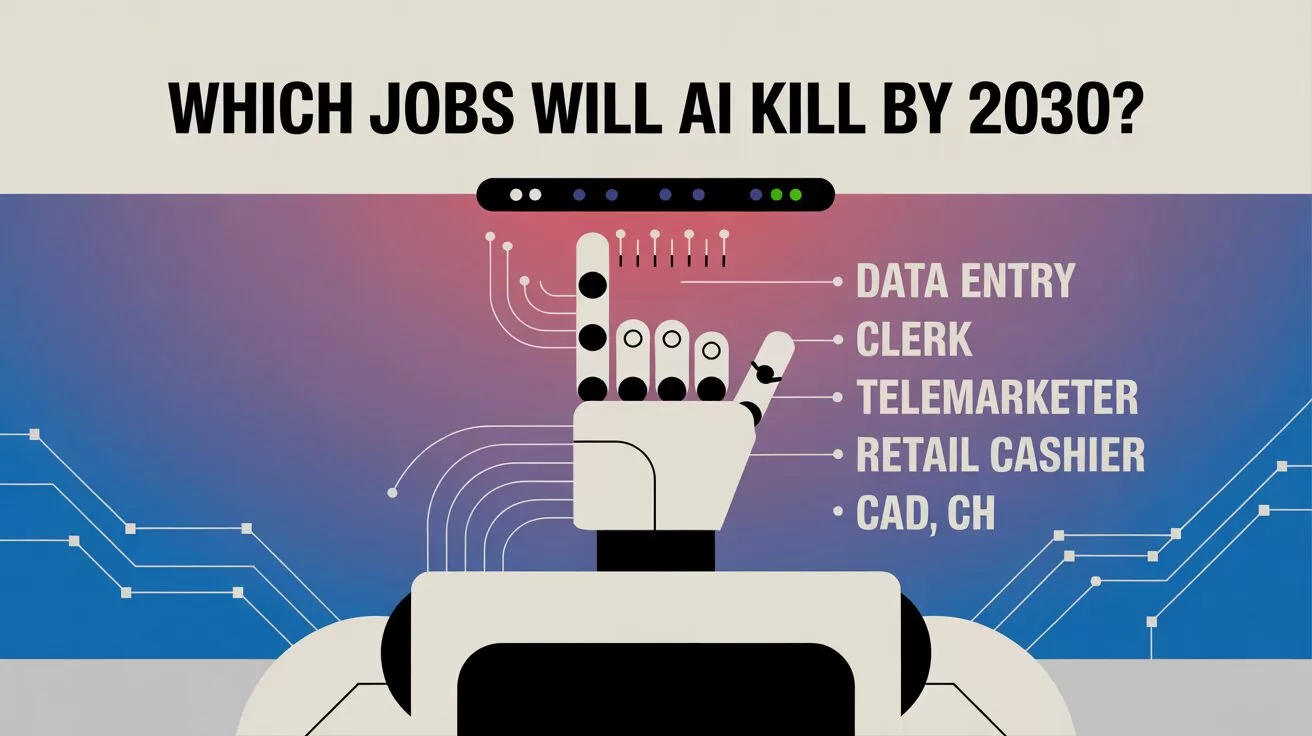
TL;DR – What You Need to Know in 30 Seconds
- Jobs on the chopping block: cashiers, postal workers, bank tellers, and admin assistants.
- Booming sectors: delivery, construction, tech, green industries, and caregiving.
- Skills employers crave: critical thinking, AI literacy, cybersecurity, and adaptability.
Is Your Job AI-Proof—Or Set to Vanish By 2030?
It’s official: AI is coming for your job. Okay, perhaps that’s a touch dramatic—but according to a startling new report from the World Economic Forum (WEF), some careers we currently take for granted will practically disappear by 2030.
Let’s be honest—this isn’t exactly surprising. Technology moves fast. AI tools like ChatGPT, automated kiosks, and smart banking apps already handle tasks that used to need humans. So, which roles are most at risk, and what new opportunities will emerge? Let’s dive into the findings.
Goodbye cashiers and postal clerks?
Top of the endangered list are clerical jobs. Cashiers, bank tellers, postal clerks, and admin assistants—these roles are shrinking fast as automation takes over repetitive tasks. The reason is clear: if a machine can handle your job quicker, cheaper, and 24/7, companies will switch.
Globally, the WEF estimates 92 million jobs will vanish by 2030. That sounds worrying, but there’s a silver lining—170 million new jobs will be created, meaning a net gain of 78 million jobs overall. But the catch? You’ll likely need new skills.
Which jobs will thrive in an AI world?
So, who’s safe (for now)? According to the WEF, frontline workers will be in huge demand. Expect growth in sectors such as:
- Delivery drivers (all those parcels from Lazada and Shopee won’t deliver themselves!)
- Construction workers (someone has to build those skyscrapers and infrastructure projects)
- Care workers and nurses (robots still can’t quite replicate human empathy)
- Teachers and counsellors (because education and mental health matter more than ever)
- Food-processing workers and farmworkers (we still need food, and lots of it)
Surprisingly human stuff, isn’t it?
And of course, the tech sector is set to boom. AI specialists, big data experts, fintech engineers, and software developers will be among the highest-growth roles by percentage. Green jobs—like renewable energy engineers and electric vehicle specialists—are also taking off, driven by the urgent need for sustainability.
Skills employers are desperate for
So, what do employers actually want? AI is reshaping job descriptions, and with that comes demand for a new mix of skills.
While tech skills like AI literacy, cybersecurity, and big data analytics are essential, companies also crave distinctly human skills: analytical thinking, resilience, agility, and creativity. Critical thinking tops the list—with 70% of companies calling it essential. It seems robots aren’t quite ready to think for themselves (yet).
Interestingly, workers can expect almost 40% of their existing skills to become outdated or radically altered within the next five years. The good news? The speed of this disruption is slowing down compared to previous years—likely because workers are proactively upskilling, embracing new tech, and keeping pace with change.
So, what’s next?
AI won’t wipe out all jobs, but it will reshape nearly all of them. The message is clear: get ready to learn. The real difference-maker for your career won’t just be your skills—it’s how quickly you can adapt to changes that technology brings.
So, ask yourself: are you ready to pivot? Because your job might depend on it.
What do you think—are you worried or excited about AI’s impact on your career? Drop your thoughts below!
You may also like:
- How to Prepare for AI’s Impact on Your Job by 2030
- The AI Shift: Coping with AI Job Transformation in Asia
- Bridging the AI Skills Gap: Why Employers Must Step Up
- Young Workers are Embracing ChatGPT
- Read more at the official WEF website by tapping here.
Author
Discover more from AIinASIA
Subscribe to get the latest posts sent to your email.
Life
Would You Trust Tesla’s Grok AI More Than Your Friends?
Will Grok xAI in Tesla vehicles start cracking jokes and navigating life better than your human friends ever could? It’s Knightrider 3.0!
Published
2 weeks agoon
April 5, 2025By
AIinAsia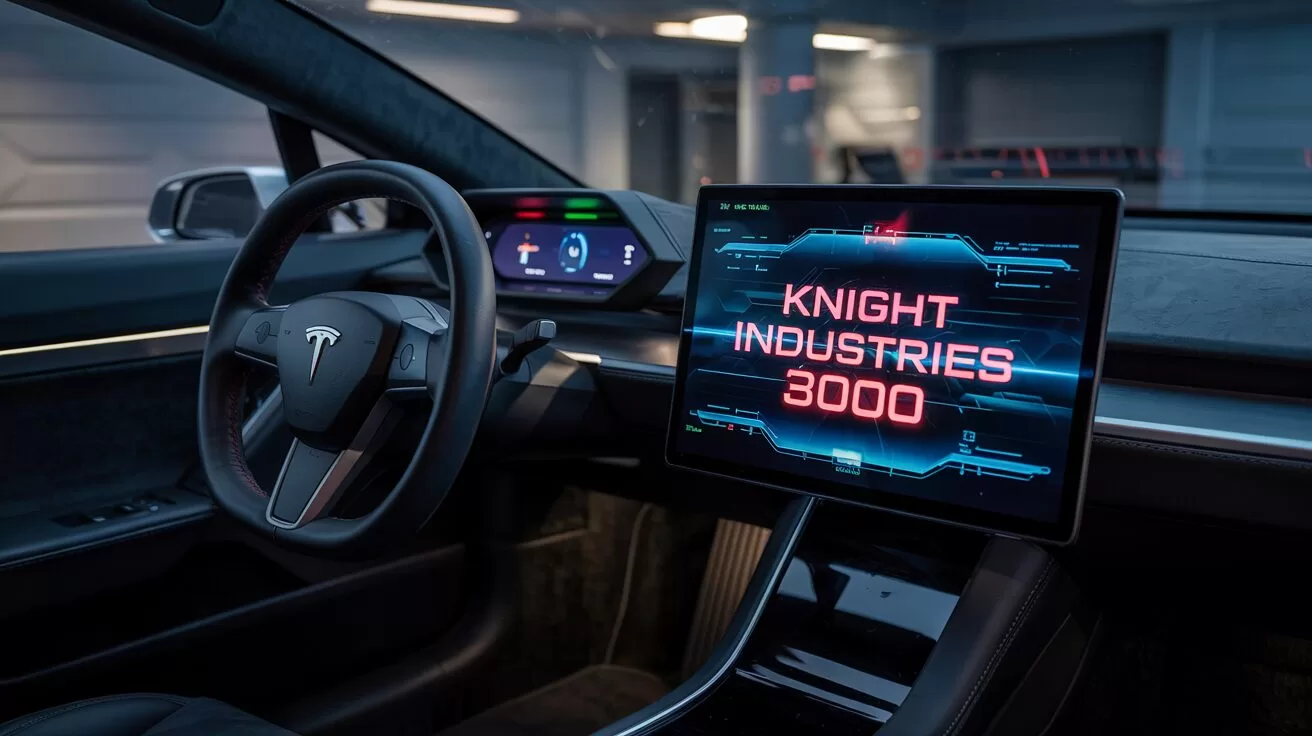
TL;DR – What You Need to Know in 30 Seconds
- Elon Musk’s Grok xAI brings humour and personality to Tesla vehicles, inspired by pop-culture classics like Knight Rider.
- Features include witty navigation, playful banter, and personalised suggestions, making everyday drives entertaining.
- Available via OTA updates, Grok ensures even older Teslas benefit—transforming driving from a chore into fun.
Night Rider 3000: Grok xAI is Coming to Tesla vehicles
Imagine if your car wasn’t just smart—it was actually funny. Remember KITT from the legendary 1980s TV show Knight Rider? Well, buckle up, because Elon Musk’s latest creation, Grok xAI, is arriving in Tesla vehicles, promising to transform your daily commute from mundane to hilarious.
Yes, Grok xAI is coming to Tesla vehicles, and honestly, KITT might just be feeling a touch inadequate.
From KITT to Grok: A Sarcastic AI Journey
If you grew up in the 80s (or wish you did), you’ll recall Michael Knight’s loyal digital companion, KITT. The car was:
- Autonomous enough to drive itself directly to Michael when called.
- Loaded with humour, cynicism, and surprisingly relatable banter.
- Essentially the dream of every teenager who imagined driving—or rather, being driven.
Fast forward to 2025, and we’re finally getting close to what Knight Rider creators imagined—only it’s real. It took humanity three decades, but Tesla, guided by Elon Musk’s boundless ambition (and perhaps his love for vintage TV), is delivering exactly this: an AI-infused, personality-rich driving companion named Grok.
Grok is More than Just a Pretty Voice
Forget dry voice commands. Grok isn’t your typical robotic GPS—it’s more like having Iron Man’s JARVIS or Marvin from The Hitchhiker’s Guide to the Galaxy in your passenger seat, but less depressing.
Today, Tesla already offers:
- Autonomous driving: With Tesla’s Full Self-Driving Beta, your vehicle can navigate traffic, switch lanes, stop at lights, and find its way to your destination—all without touching the wheel.
- Smart Summon: Like KITT, your Tesla can autonomously locate you in a car park—ideal when you forget where you parked.
- Interactive dialogue: Grok steps this up a gear, offering banter-filled exchanges like, “Fancy finding the best burger in town, or shall we race that Prius?”
And while Grok won’t judge your questionable dating decisions (yet), it can definitely advise on local ramen joints, adding a welcome dose of personality to every ride.
So, What Exactly is Grok Bringing to the Dashboard?
As of March 2025, the Grok rollout is already underway. Here’s a taste of what’s arriving in your Tesla dashboard soon:
- Humorous Navigation: Forget dull instructions—expect cheeky remarks even on the most routine errands.
- Personalised Entertainment: Long drive ahead? Grok’s got jokes, stories, or even plans to invade Mars (hypothetically, of course).
- Smart, Caring Suggestions: Detecting tiredness? Grok gently insists you take a stylish break—and might even volunteer to take over the wheel soon enough.
It’s All In The Cloud
Grok operates from the cloud, meaning even older Teslas aren’t left behind. No hardware envy necessary. Updates roll out OTA (over-the-air), turning your boring Monday commute into a surprise Grok introduction: “Morning, human. Ready to spice up your drive?”
Future updates might see Grok communicating seamlessly with your smart home, evolving your Tesla into a digital butler with a flair for comedy.
Grok vs KITT: The Ultimate AI Showdown
KITT was revolutionary in the 80s, but Grok takes things up several sarcastic notches. Elon Musk famously said, “AI should be useful but also fun”—and Grok exemplifies this mantra:
- Personality-loaded dialogue
- Meme-savvy cultural references
- Probably superior taste in music than half your playlists (sorry, not sorry)
In a Grok-equipped Tesla, your ride is less about transportation and more about entertainment—with just the right pinch of irony.
A Future of Irony, Electricity, and Laughs
Grok demonstrates how technology can be vibrant and personable rather than cold and sterile. Forget listening to repetitive radio ads—Grok’s goal is keeping you alert, amused, and connected during those monotonous motorway stretches.
Whether you’re off to work or touring through Asia, Grok turns every drive into a conversation worth having.
CONCLUSION: Grok + Tesla = A New Definition of Driving Fun
Grok doesn’t just redefine driving—it redefines companionship. With this witty, personable AI in your Tesla, you’re getting a co-pilot, therapist, comedian, and personal assistant all in one.
Don’t have Grok yet? Patience—your silent, humourless rides will soon be history.
Would You Trust Tesla’s Grok AI More Than Your Friends? Let us know in the comments below!
You may also like:
Tesla’s Optimus: The Future of Robotics in Asia and Beyond
Meet Tesla’s Optimus: The Humanoid Robot That Can Do Anything
Grok AI Goes Free: Can It Compete With ChatGPT and Gemini?
Read more about the launch at the NASDAQ website.
Author
Discover more from AIinASIA
Subscribe to get the latest posts sent to your email.

AI Career Guide: Land Your Next Job with Our AI Playbook

Will AI Take Your Job—or Supercharge Your Career?

Can AI Videos Really Boost Your Brand’s Authenticity?
Trending
-

 Business3 weeks ago
Business3 weeks agoCan PwC’s new Agent OS Really Make AI Workflows 10x Faster?
-

 Life3 weeks ago
Life3 weeks agoAI-pril Fools! How AI is Outsmarting Our Best Pranks
-

 Life2 weeks ago
Life2 weeks agoWhich Jobs Will AI Kill by 2030? New WEF Report Reveals All
-

 Life1 week ago
Life1 week agoAI Career Guide: Land Your Next Job with Our AI Playbook
-

 Business2 weeks ago
Business2 weeks agoWill AI Take Your Job—or Supercharge Your Career?
-

 Marketing2 weeks ago
Marketing2 weeks agoWill AI Kill Your Marketing Job by 2030?
-

 Tools2 weeks ago
Tools2 weeks agoCan AI Videos Really Boost Your Brand’s Authenticity?
-

 Business2 weeks ago
Business2 weeks agoThe Three AI Markets Shaping Asia’s Future




